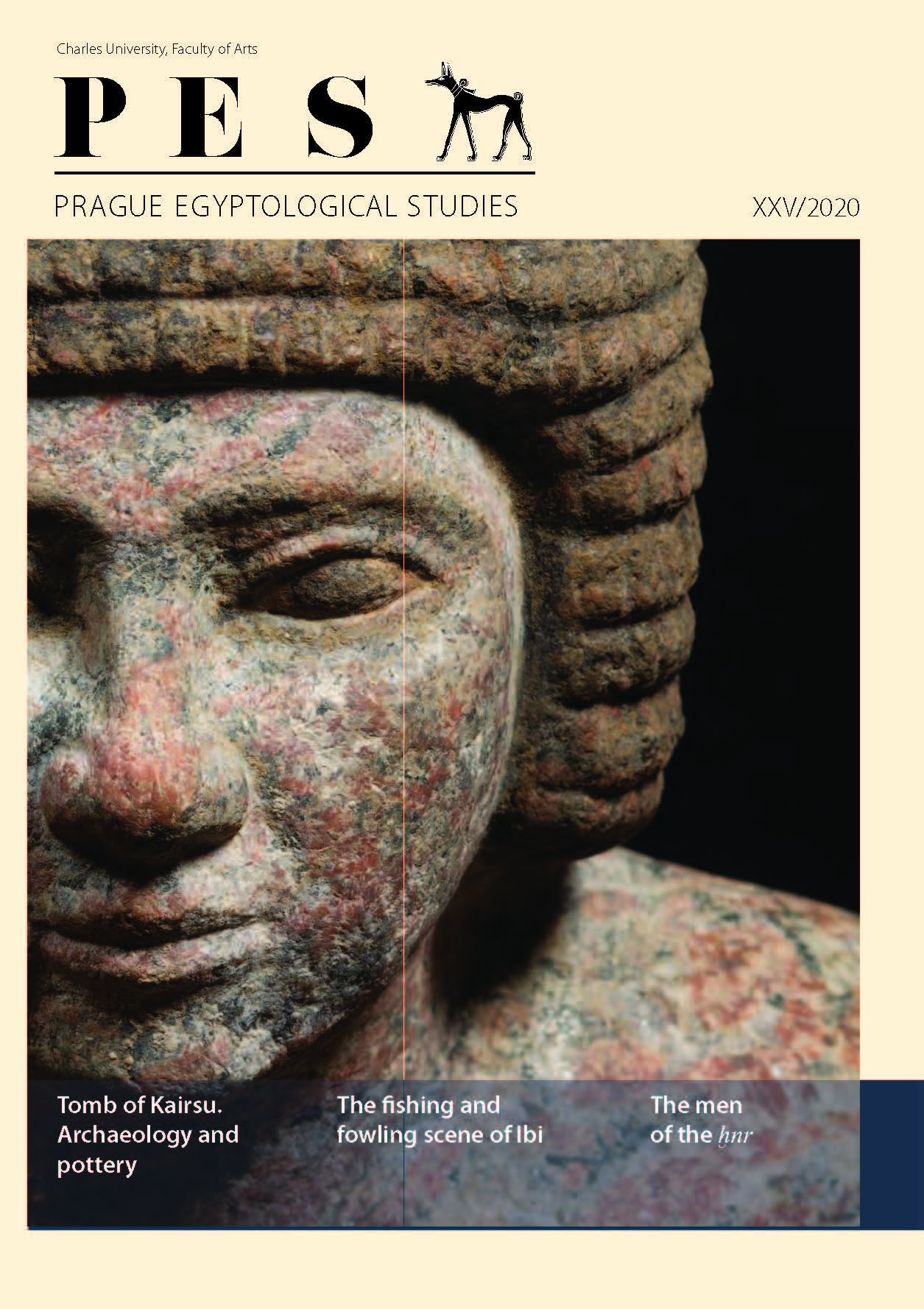Pottery from the tomb of Kairsu (AC 33) – a preliminary analysis
Pottery from the tomb of Kairsu (AC 33) – a preliminary analysis
Author(s): Katarína Arias KytnarováSubject(s): Archaeology, Ancient World
Published by: Univerzita Karlova v Praze - Filozofická fakulta, Vydavatelství
Keywords: Abusir; tomb; pottery; burial equipment; embalming deposit; refuse layers
Summary/Abstract: This paper presents a preliminary report on the most significant ceramic contexts from the tomb of official Kairsu, excavated at Abusir Centre in the autumn of 2018. Based on the pottery finds, the activities in the tomb can be divided roughly into three main time frames. During the middle to late Fifth Dynasty, the tomb was constructed and four main burial shafts and apartments were equipped. The preliminary analysis shows that Kairsu was buried at a slightly earlier date than the owners of Shafts 2, 3 and 4, although all the pottery belongs to the span of the middle to late Fifth Dynasty. The area east of the tomb is characterized by secondary activities – in the course of the late Fifth and early Sixth Dynasty, two small additional shafts were built; one in the corridor of AC 33 (Shaft 6) and another in the corner north of the so-called entrance rooms (Shaft 5), the second one very likely serving as an embalming deposit for an (at this point) unknown burial. The so-far analysed destruction and refuse layers in and around Entrance Rooms 1 and 2 can be dated to the Sixth Dynasty, with some contexts associated with pottery characteristic of the first half of the dynasty (within a time span of Pepy I to Merenre) and one cluster containing vessels typical of the second half of the Sixth Dynasty.
Journal: Pražské egyptologické studie
- Issue Year: 2020
- Issue No: 25
- Page Range: 59-81
- Page Count: 23
- Language: English

